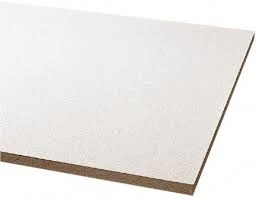- Afrikaans
- Albanian
- Amharic
- Arabic
- Armenian
- Azerbaijani
- Basque
- Belarusian
- Bengali
- Bosnian
- Bulgarian
- Catalan
- Cebuano
- Corsican
- Croatian
- Czech
- Danish
- Dutch
- English
- Esperanto
- Estonian
- French
- German
- Greek
- Hindi
- Indonesian
- irish
- Italian
- Japanese
- Korean
- Lao
- Malay
- Myanmar
- Norwegian
- Norwegian
- Polish
- Portuguese
- Romanian
- Russian
- Serbian
- Spanish
- Swedish
- Thai
- Turkish
- Ukrainian
- Uzbek
- Vietnamese
Սպտ . 28, 2024 01:50 Back to list
Comparing PVC Ceilings and Gypsum Board for Interior Design Choices
PVC Ceilings vs Gypsum Ceilings A Comprehensive Comparison
When it comes to choosing ceiling materials for residential or commercial spaces, PVC (polyvinyl chloride) and gypsum are two popular options that often come under consideration. Each material has its own set of advantages and disadvantages, making the decision dependent on various factors such as aesthetics, durability, maintenance, and cost. In this article, we will explore the key differences between PVC ceilings and gypsum ceilings to help you make an informed choice.
Aesthetic Appeal
A ceiling greatly affects the overall aesthetics of a room. PVC ceilings are available in a wide range of colors, designs, and textures, including glossy, matte, and printed finishes. This versatility allows for creative expression, enabling homeowners and designers to find a style that perfectly matches the decor of the space. On the other hand, gypsum ceilings offer a more traditional appearance, often featuring smooth surfaces that can be painted or decorated with intricate designs. Gypsum is easily molded, allowing for decorative cornices, ceiling roses, and other architectural features.
Durability
When it comes to durability, PVC ceilings typically outperform gypsum ceilings. PVC is resistant to moisture, meaning it does not warp, crack, or swell in humid conditions. This makes it an excellent choice for areas with high humidity, such as kitchens and bathrooms. Additionally, PVC ceilings are not susceptible to mold, making them a safer option for health-conscious individuals. In contrast, gypsum ceilings, while sturdy, can be vulnerable to water damage and may require additional treatment for moisture resistance, particularly in damp environments.
Installation
The installation process for both PVC and gypsum ceilings varies. PVC ceilings are lighter, making them easier to handle and install. They can be fixed over existing ceilings without the need for extensive preparation, which saves time and labor costs. Gypsum ceilings, while not excessively heavy, require more meticulous preparation and a stronger supporting framework. This can lead to longer installation times and potentially higher costs due to labor.
pvc ceiling vs gypsum

Maintenance
PVC ceilings are known for their low maintenance requirements. They can be easily cleaned with a damp cloth and do not require painting. Their resistance to moisture also means they are less likely to suffer from stains and discoloration over time. Gypsum ceilings, while beautiful, require more upkeep. They need to be painted periodically, and if they become damaged due to moisture, repairs can be more challenging and costly.
Cost
When evaluating costs, PVC ceilings are often more economical than gypsum ceilings. The initial cost of PVC is generally lower, and the savings from reduced maintenance and installation time can add up. However, it is important to consider the long-term perspective; while gypsum ceilings might have a higher upfront cost, their aesthetic appeal and potential longevity could justify the investment in spaces where a high-quality finish is essential.
Fire Safety
Fire safety is another aspect worth mentioning. Gypsum has inherently fire-resistant properties due to its composition, which can provide added safety in case of fire. Conversely, while PVC may be treated with fire retardants, it is not naturally fire-resistant, raising concerns about its performance in fire scenarios.
Conclusion
In conclusion, both PVC and gypsum ceilings have their advantages and drawbacks. PVC ceilings are an excellent choice for those seeking a cost-effective, low-maintenance, and moisture-resistant option that offers a wide variety of designs. Meanwhile, gypsum ceilings attract individuals looking for a timeless, elegant finish, especially in areas where aesthetics are paramount. Ultimately, the choice between PVC and gypsum ceilings should be guided by specific needs, preferences, and the intended use of the space. By carefully considering these factors, you can select a ceiling material that enhances not just the beauty of a room, but its functionality and longevity as well.
-
Transform Interiors with PVC Gypsum Ceiling: A Stylish, Durable, and Moisture-Resistant SolutionNewsMay.19,2025
-
The Smart Interior Upgrade: Discover the Durability and Versatility of Gypsum Ceiling Access Panel SolutionsNewsMay.19,2025
-
The Smart Choice for Interior Design: Discover the Value of PVC Gypsum Ceiling SolutionsNewsMay.19,2025
-
Mineral Fiber Ceiling Tiles: The Smart Blend of Performance and AestheticsNewsMay.19,2025
-
Mineral Fiber Ceiling Tiles: The Superior Choice Over Gypsum for Sound and Fire SafetyNewsMay.19,2025
-
Mineral Fiber Ceiling Tiles: Eco-Friendly Strength and Style for Every CeilingNewsMay.19,2025







